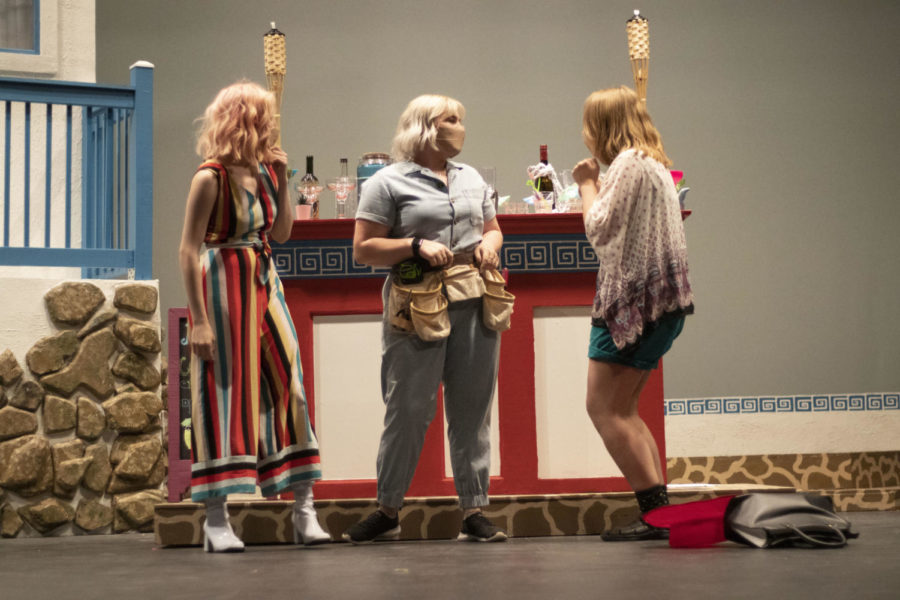Crews Behind the Curtain Call
The experience of the tech crews working on each school production.
Opening the doors to the auditorium, the sounds of laughter and general chaos fill the room in seconds as the tech crew starts their work. Often taking a secondary role to performers, tech crew’s work is generally not known to the public. Costumes, set, lights, sound, makeup, paint, publicity, and props make up the eight different groups responsible for the behind-the-scenes magic of all school productions.
“Tech crew is very challenging, but it can teach you life skills,” drama director Michelle Williamson said. “It allows you to do theater if you don’t want to be the person acting and singing, but these are things you’re going to be able to use in real life.”
Approximately 80 kids meet every Monday after school to make sure the production will run smoothly. Then, in the two weeks leading up to the first showing, it’s tech week, every day.
“When we get closer to the performances, we’ll sometimes need to come into school on Saturdays to finish up work from the week before or work we weren’t able to,” sound chief Sam Broesch said. “Tech days on Saturdays are usually a fun and stress-free time. If everyone is efficient and able to finish their work on time, then we are able to have fun and watch a movie or play Just Dance for the rest of the time.”
Each crew has a different set of skills and responsibilities. For example, the sound crew is in charge of cues, music, and mics for the shows and the set crew is in charge of building the actual structures seen on stage.
“Paint crew paints the set and does any touch’s ups before shows, props dresses the set, adding final touches. Lights set the lighting for each scene, sound controls mics and any sound effects we need, costumes dress the cast to fit the show, and makeup and hair add the final touches to the cast,” set chief Charlie Berens said.
The hierarchy is as follows: student members will report to their student chiefs, those chiefs will then report to the directors, Williamson and Kari Murphy. Each crew member will also report to the directors.
“Each crew has a crew chief, usually we do two crew chiefs so they can help each other out. They’re student chiefs, usually upperclassmen with more experience,” Williamson said. “They oversee their crew and help to train the new members.”
The reviews are positive across the board: kids like theater tech. Between the friends made in each crew, getting to run the show with the actors, and experimenting with new technology, they love it.
“[While waiting for actors to get ready] I usually just chill up here with my crew until it’s time to start. And then we just run the whole show. That’s what we do, and it’s fun, and I get to chill here with everybody,” senior and lights chief Sloane Vanarsdall said.
The directors and chiefs alike agree, even if a newcomer doesn’t know much about the crews, there’s only one way to find out if you like it.
“If you don’t know what crew you want to be on, just go around to each one and see what they do. You can try different crews and even join two crews for one production and see what you like better. If you find the one you like, you can join it and have fun,” Broesch said.
Pulling the curtains back and picking up a paintbrush, tech crews take care of anything you could think of: advertising, making costumes, designing makeup looks, and more. Students are in charge of their own future. Equipping them with practical skills while still managing to have fun is a mighty task, but the auditorium full of opportunities provides.
Graphics? Fact and fiction about crew/misconceptions surrounding crew


